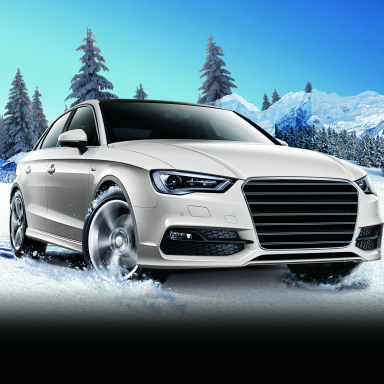
Winter Car Tire Maintenance Techniques
If our car has a set of ice and snow tires when driving on icy and snowy roads in winter, it may be easier, easier, and safer to drive. So winter tires are really as magical as I said, can they help us improve driving safety? Please read along with the article and we will definitely give you a satisfactory answer in the end.

1) What is winter tires
Most people in China believe that winter tires are snow tires, but this concept is not comprehensive. The internationally accepted standard is tires suitable for use at temperatures below 7 degrees Celsius. Compared with summer tires and all-weather tires, winter tires use different formulas and therefore have softer materials, wider and deeper tread grooves, which can provide stronger grip and slip resistance on ice and snow roads, ensuring the adhesion of the car on the road at low temperatures, making it dry and cold in winter Both wet and snowy roads can provide better braking and handling performance. Winter tires are divided into three specifications based on road anti slip performance: serrated tires, snow tires, and anti slip nail tires. Currently, in China, except for non slip nail tires, the other two types of winter tires can be used.
2) Why does driving slip in winter
In winter, the temperature is low, especially after snow or rain, it is easy to freeze on the ground. When driving on the ice, the tires of a vehicle may melt due to the influence of pressure and tire temperature, leading to a decrease in the adhesion between the vehicle tires and the ground, resulting in vehicle slipping.
3) Why regular tires cannot be used as snow tires

Snow tires have significant differences in materials, tire patterns, and other aspects compared to regular tires. From the appearance, snow tires have asymmetric directional tread patterns. Snow tires have more grooves, which means the proportion of grooves on the tire surface is higher, and the better the drainage performance. There are at least 1000 small grooves in snow tires, and about 200 in regular tires.
From a material perspective, snow tires are softer than regular tires, mainly due to the use of special formulas on the tread, which generates greater friction than regular all-weather tires, greatly improving the handling and safety of the vehicle on smooth ice surfaces. Under low temperature conditions, snow tires will still maintain a softer texture, while regular tires will become harder as the temperature decreases.
4) What is special about winter tires in terms of design
In addition to the more tire patterns mentioned earlier, the groove depth of winter tires is also deeper than that of regular all-weather tires. The advantage of this design is that it can increase water displacement and improve the friction between the tires and the ground.
In addition, the shoulder of winter tires is designed to be angular, which is different from regular all-weather tires. The design of angular shape mainly increases the contact between the tire and the ground, increases friction, and prevents serious side slip when driving on ice and snow roads.